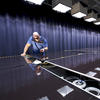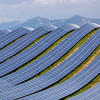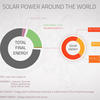You are here
Capturing the Sun in a Cell
01.07.2016
The photovoltaic industry has secured its role as a major contender in energy transition, whose economic and social stakes are now higher than ever. Researchers from the Lyon-based Institute of nanotechnology (INL) are developing innovative technologies to both increase efficiency and reduce the manufacturing cost of solar panels.

1
Slideshow mode
Solar cells on the market today can convert between 18 and 20% of the sunlight's energy into electricity. The objective is to increase this rate while lowering production costs-and researchers from the Institut des nanotechnologies de Lyon (CNRS/Centrale Lyon/Insa/UCBL/CPE) have been exploring several avenues to accomplish this feat.
Cyril Frésillon / INL / CNRS Photothèque

2
Slideshow mode
A photovoltaic cell is composed of functional materials such as silicon, silicon nitride, silver, or aluminum oxide. The INL researchers use cells made of thin layers of crystalline silicon.
Cyril Frésillon / INL / CNRS Photothèque

3
Slideshow mode
The production of thin layers of monocrystalline silicon makes it possible to limit the use of materials and develop flexible cells. These layers are grown in a reactor heated to 1100°C-with the entire process lasting approximately one and a half hours.
Cyril Frésillon / INL / CNRS Photothèque

4
Slideshow mode
Metal electrodes are deposited on both sides of the cell to capture the photogenerated current. The deposition of these metals (silver, aluminum, etc.) can be made through a process called sputtering.
Cyril Frésillon / INL / CNRS Photothèque

5
Slideshow mode
A layer of silicon nitride is deposited on the surface of the photovoltaic cells. This anti-reflective layer is essential as it lets the photons penetrate the cell but also reduce the amount of light that is reflected, as it affects efficiency.
Cyril Frésillon / INL / CNRS Photothèque

6
Slideshow mode
Scientists use a UV laser to heat the silicon locally and dope it with phosphorous or borium, which alters its properties as a semiconductor.
Cyril Frésillon / INL / CNRS Photothèque

7
Slideshow mode
This laser improves electric contact between the silicon and the metal deposit, increasing overall efficiency when compared with the standard process.
Cyril Frésillon / INL / CNRS Photothèque

8
Slideshow mode
The silicon samples are prepared before being inserted in a deposition reactor, where a layer of aluminum oxide is deposited on their surface.
Cyril Frésillon / INL / CNRS Photothèque

9
Slideshow mode
The layer of aluminum oxide increases cell efficiency by reducing surface imperfections that can trap the light-generated electrons.
Cyril Frésillon / INL / CNRS Photothèque

10
Slideshow mode
The electrical conversion performance and efficiency of photovoltaic cells are monitored using a calibrated solar simulator.
Cyril Frésillon / INL / CNRS Photothèque
Explore more
Matter
Article
10/27/2025
Slideshow
07/17/2025
Article
07/07/2025
Article
03/26/2025
Slideshow
03/19/2025
Energy
Article
10/03/2025
Article
10/10/2017
Article
09/19/2016
Opinion
12/09/2015
Article
10/14/2015
Photovoltaics
Article
04/18/2024
Article
10/14/2015
Infographics
01/25/2014













